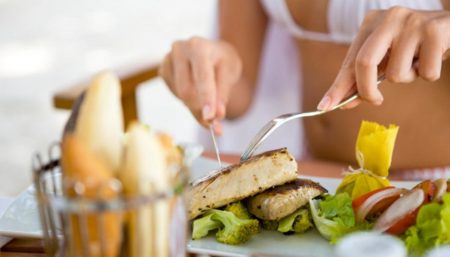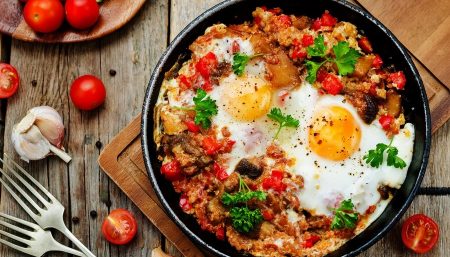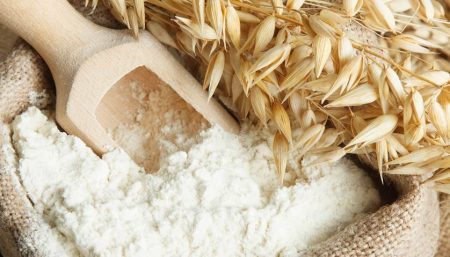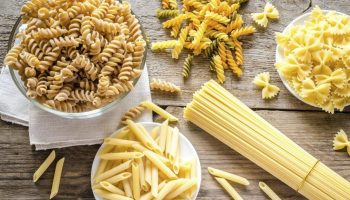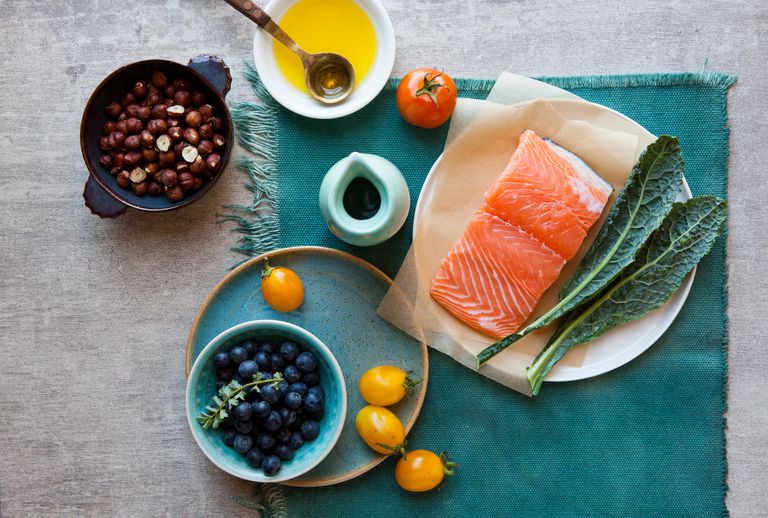
The South Beach Diet was invented by the Florida based cardiologist Dr Arthur Agatston, and was named after the popular southern Florida beach hotspot. Dr Agatston claims that the diet is easy to stick to, stating that “This diet works because it doesn’t require a lot of self-control — you’re not hungry on it, and there’s a great variety of foods to eat so you won’t get bored and go off it”.
No major food groups are eliminated, plenty of fruit and vegetables are recommended and generally the diet follows the basic principles of healthy eating with the result that it should provide plenty of the nutrients you need to stay healthy.
Characteristics of The South Beach Diet
![]() The first principle was to permit good carbohydrates (fruits, vegetables, and whole grains) and curtail the intake of bad carbohydrates (the highly processed ones, for the most part, where all the fiber had been stripped away during manufacturing). The South Beach Diet follows the principles based on the Glycaemic Index. When we’ve eaten, the carbohydrates in food get broken down into sugars, which are then absorbed into the blood causing a rise in blood sugar. In response, the hormone insulin is released from the pancreas to remove the sugar from the blood. Carbohydrate-rich foods with a high glycaemic index, like bagels, cornflakes, white bread and jacket potatoes cause a rapid rise in blood sugar, resulting in the release of a large amount of insulin to deal with this. This causes blood sugar levels to drop rapidly, leaving you lacking in energy, craving more carbs and quickly feeling hungry so that you eat again. If this pattern is frequently repeated, you’re likely to gain weight as a result a constantly overeating.
The first principle was to permit good carbohydrates (fruits, vegetables, and whole grains) and curtail the intake of bad carbohydrates (the highly processed ones, for the most part, where all the fiber had been stripped away during manufacturing). The South Beach Diet follows the principles based on the Glycaemic Index. When we’ve eaten, the carbohydrates in food get broken down into sugars, which are then absorbed into the blood causing a rise in blood sugar. In response, the hormone insulin is released from the pancreas to remove the sugar from the blood. Carbohydrate-rich foods with a high glycaemic index, like bagels, cornflakes, white bread and jacket potatoes cause a rapid rise in blood sugar, resulting in the release of a large amount of insulin to deal with this. This causes blood sugar levels to drop rapidly, leaving you lacking in energy, craving more carbs and quickly feeling hungry so that you eat again. If this pattern is frequently repeated, you’re likely to gain weight as a result a constantly overeating.
Carbs with low glycaemic index such as pasta, pulses and porridge slowly release sugar into the blood, providing a steady supply of energy and leaving you feeling satisfied for longer. This means you get fewer carb cravings, don’t constantly feel hungry and so are less likely to overeat. Plus there’s less chance that your body will become resistant to the effects of insulin with the result that it continues to burn fat efficiently. Foods with a low GI are therefore recommended if you want to lose weight.
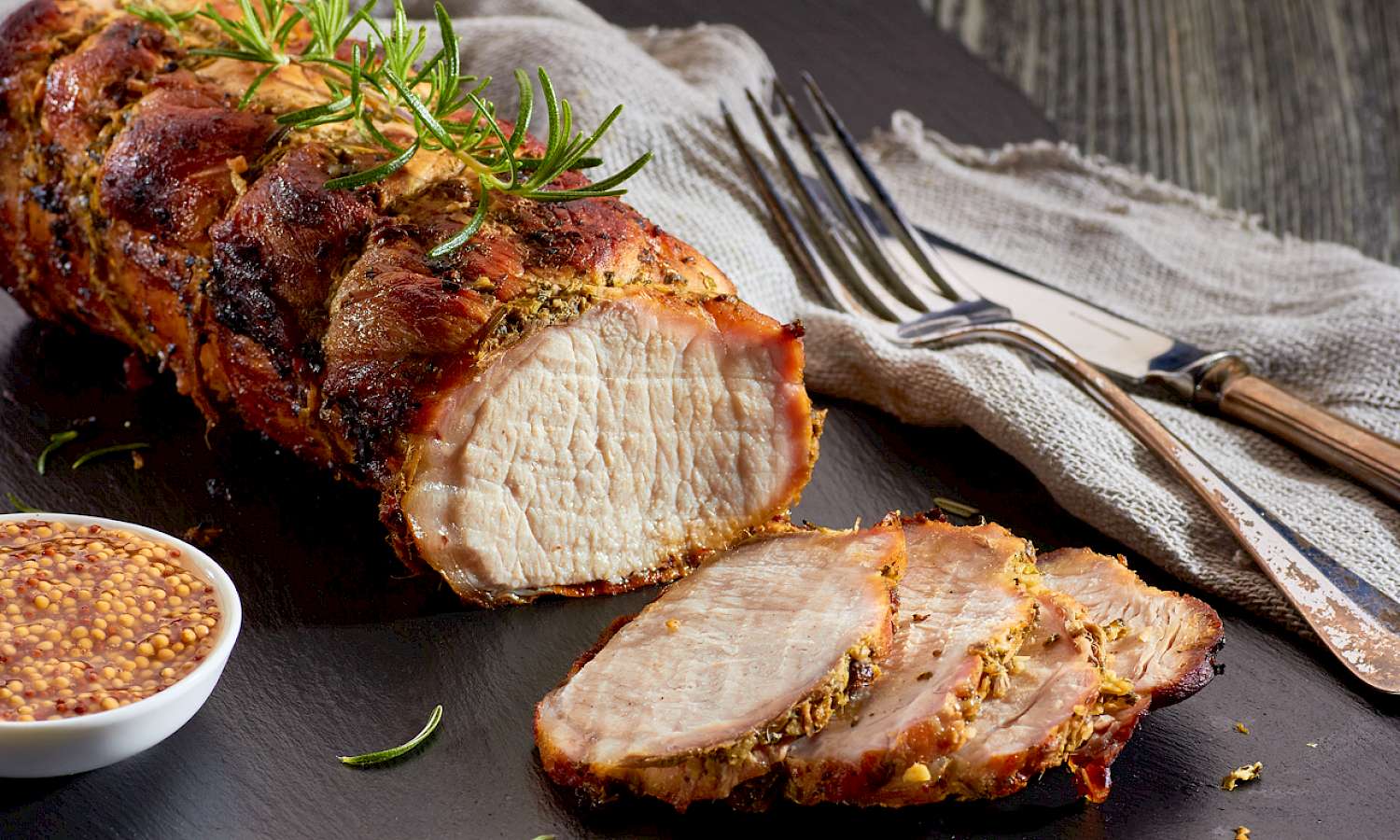
![]() The diet permitted animal proteins -To make up for the overall cut in carbohydrates The South Beach Diet permits intake of lean beef, pork, veal, and lamb.According to the South Beach diet lean meat does not have a harmful effect on blood chemistry. Even egg yolks are considered good as, they’re a source of natural vitamin E and have a neutral-to-favorable effect on our balance between good and bad cholesterol. Chicken, turkey, and fish (especially the oily ones such as salmon, tuna, and mackerel) are recommended , along with nuts and low-fat cheeses and yogurt.
The diet permitted animal proteins -To make up for the overall cut in carbohydrates The South Beach Diet permits intake of lean beef, pork, veal, and lamb.According to the South Beach diet lean meat does not have a harmful effect on blood chemistry. Even egg yolks are considered good as, they’re a source of natural vitamin E and have a neutral-to-favorable effect on our balance between good and bad cholesterol. Chicken, turkey, and fish (especially the oily ones such as salmon, tuna, and mackerel) are recommended , along with nuts and low-fat cheeses and yogurt.
![]() The diet permitted ample fats– Plenty of healthymono– and polyunsaturated fats, like the Mediterranean ones: olive oil, canola oil, and peanut oil are allowed as these are the good fats. According to Dr Agatston they can actually reduce the risk of heart attack or stroke. In addition to being beneficial, they make food more palatable. They’re filling, too-a major consideration for a diet that promises that you won’t have to go hungry.
The diet permitted ample fats– Plenty of healthymono– and polyunsaturated fats, like the Mediterranean ones: olive oil, canola oil, and peanut oil are allowed as these are the good fats. According to Dr Agatston they can actually reduce the risk of heart attack or stroke. In addition to being beneficial, they make food more palatable. They’re filling, too-a major consideration for a diet that promises that you won’t have to go hungry.
![]() Flexibility is a feature mentioned in this diet. It allows people to eat the way they actually like to eat, while improving their blood chemistry and helping them to lose weight and maintain the loss over the long run. This means a lifetime, not 3 months or a year. This plan allows dieters to bend or break therules, so long as they understood exactly what damage they’ve done and how to undo it. According to the author, if the cheating put a few pounds on, or stalled the weight loss, the setback would be minimal and easily repaired, rather than spelling doom.
Flexibility is a feature mentioned in this diet. It allows people to eat the way they actually like to eat, while improving their blood chemistry and helping them to lose weight and maintain the loss over the long run. This means a lifetime, not 3 months or a year. This plan allows dieters to bend or break therules, so long as they understood exactly what damage they’ve done and how to undo it. According to the author, if the cheating put a few pounds on, or stalled the weight loss, the setback would be minimal and easily repaired, rather than spelling doom.
![]() Simplicity– The diet is based on dishes that are easy to make, with ingredients that are commonly found in supermarkets or in most restaurants. The plan requires snacks between meals, but the kind that can be thrown into a briefcase or backpack in the morning and eaten on the run.
Simplicity– The diet is based on dishes that are easy to make, with ingredients that are commonly found in supermarkets or in most restaurants. The plan requires snacks between meals, but the kind that can be thrown into a briefcase or backpack in the morning and eaten on the run.
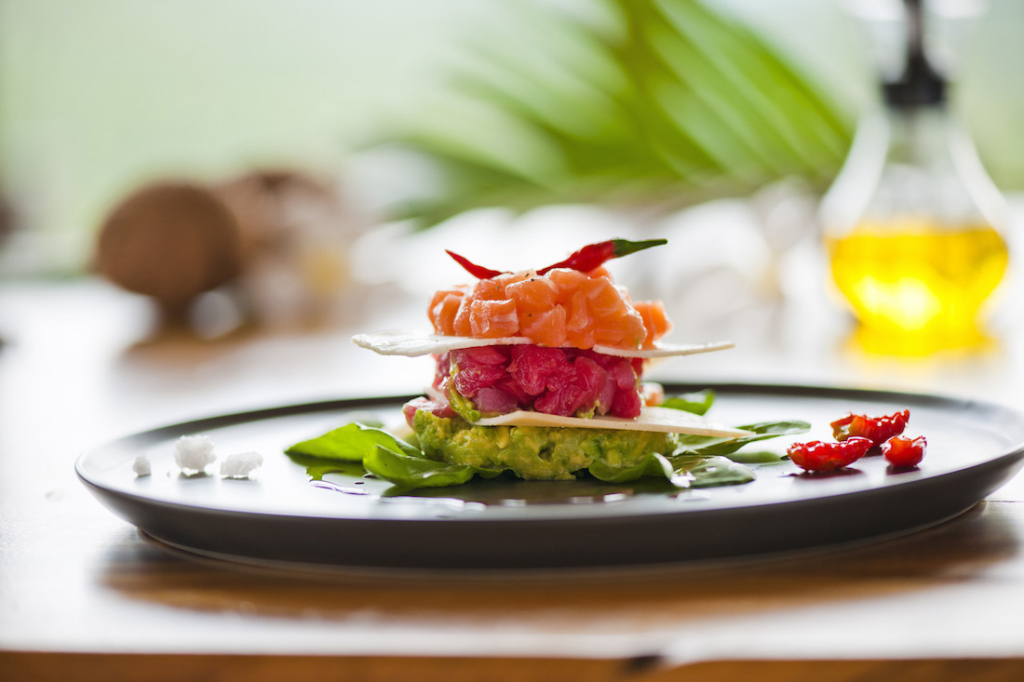
![]() No limits on portion sizes- The diet is distinguished by the absence of calorie counts; percentage counts of fats, carbs, and proteins; or even rules about portion size. The major concern is that dieters should eat good carbs and good fats. Once that’s all under control, portions and percentages take care of themselves. By choosing the right carbs and the right fats, you simply won’t be hungry all the time. When you’re eating the good carbohydrates and good fat, portion control tends to take care of itself, but not always.
No limits on portion sizes- The diet is distinguished by the absence of calorie counts; percentage counts of fats, carbs, and proteins; or even rules about portion size. The major concern is that dieters should eat good carbs and good fats. Once that’s all under control, portions and percentages take care of themselves. By choosing the right carbs and the right fats, you simply won’t be hungry all the time. When you’re eating the good carbohydrates and good fat, portion control tends to take care of itself, but not always.
![]() Fast Weight loss– The South Beach diet claims you can lose up to a staggering 13lb in just two weeks, it suggests you can also expect to lose most of that weight from your tummy. However, the amount of weight loss depends on the amount of weight you have to lose as well as several metabolic factors. Those who have had significant adult weight gain and/or who have a family history of diabetes and/or have predominant central obesity, as well as those with elevated triglycerides, have the most predictable and thefastest weight loss.
Fast Weight loss– The South Beach diet claims you can lose up to a staggering 13lb in just two weeks, it suggests you can also expect to lose most of that weight from your tummy. However, the amount of weight loss depends on the amount of weight you have to lose as well as several metabolic factors. Those who have had significant adult weight gain and/or who have a family history of diabetes and/or have predominant central obesity, as well as those with elevated triglycerides, have the most predictable and thefastest weight loss.
![]() The diet aims at avoiding ketosis while still losing your cravings, resulting in much less water loss. On restricting all carbohydrates, as done in the Atkins diet, where you deplete your sugar stores and begin to burn fat orenergy, you stand a strong chance of developing ketosis, which is due to breakdown products of fat that are associated with significant water loss. On the South Beach diet you include the good vegetables and carbohydrates from the beginning, you avoid ketosis while still losing your cravings, and this results in much less water loss.
The diet aims at avoiding ketosis while still losing your cravings, resulting in much less water loss. On restricting all carbohydrates, as done in the Atkins diet, where you deplete your sugar stores and begin to burn fat orenergy, you stand a strong chance of developing ketosis, which is due to breakdown products of fat that are associated with significant water loss. On the South Beach diet you include the good vegetables and carbohydrates from the beginning, you avoid ketosis while still losing your cravings, and this results in much less water loss.
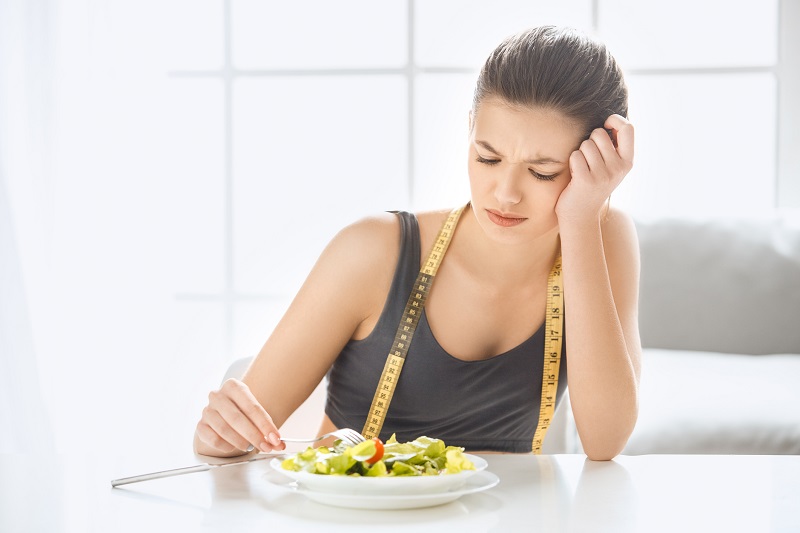
![]() Losing weight on the South Beach diet consistently improves blood chemistries. Clinical studies have shown that triglycerides fall substantially while the good cholesterol stays the same or increases. The South Beach diet is the only diet that has been shown to increase the size of the bad cholesterol molecules (LDL). This makes the bad cholesterol particles less likely to enter the vessel wall and cause blockages.
Losing weight on the South Beach diet consistently improves blood chemistries. Clinical studies have shown that triglycerides fall substantially while the good cholesterol stays the same or increases. The South Beach diet is the only diet that has been shown to increase the size of the bad cholesterol molecules (LDL). This makes the bad cholesterol particles less likely to enter the vessel wall and cause blockages.
![]() Effective regardless of exercise– The South Beach Diet does not depend on exercise in order to work. You’ll lose more weight, faster, if you are active on a regular basis. But you’ll lose weight even if you’re not.
Effective regardless of exercise– The South Beach Diet does not depend on exercise in order to work. You’ll lose more weight, faster, if you are active on a regular basis. But you’ll lose weight even if you’re not.
Following the diet:
the South Beach is divided into three phases. In Phase One, most carbohydrates are banned to give your body a complete rest from fluctuating blood sugar and insulin levels. The theory is this will help to resolve insulin resistance.
- During Phase One, the banned foods list includes bread, rice, potatoes, pasta, fruit, milk, sweets, cake, biscuits, ice cream, sugar and alcohol. A few low GI veg such as broccoli and cabbage are allowed, but the focus is on eating lean meat, chicken, fish, eggs, low-fat cheese, some nuts and olive oil. You follow this phase for 14 days.
- In Phase Two, low GI carbs including most fruits, Granary bread, wholegrain cereals and pasta and low-fat milk are reintroduced. The idea is to stay with this phase until you’ve reached your target weight.
- Finally, in Phase Three you introduce an even wider variety of foods. This phase is aimed at keeping your weight steady and the diet recommends you stay on this for life.
The South Beach Diet claims you can lose 8-13lb in the first two weeks. Once you enter Phase Two, you can expect a more reasonable loss of 1-2lb a week.
For each phase, there are no limits on portion sizes – you simply eat enough to satisfy your appetite – and you’re encouraged to eat three meals and snacks each day.
The cons?
The extreme carbohydrate restriction in the first two weeks requires serious willpower and may leave you feeling weak and wobbly. Meanwhile, you won’t be getting your five fruit and veg each day during Phase One, which may leave you missing out on some vitamins and minerals. Eliminating all carbohydrate-rich foods during this phase also means you’ll be cutting out some other good sources offibre, vitamins and minerals. For example, wholegrain breads and cereals are packed with fibre, B vitamins and iron, while milk is an excellent source of calcium and zinc.
Most nutrition experts are not happy with the recommended weight loss. General guidelines recommend losing no more than 2lb a week for good health and so experts are concerned that this diet promotes such a large weight loss in the first two weeks. They say this is unhealthy and is simply the result of a severe calorie restriction caused by cutting out all carbs. As for losing weight specifically from your midriff, most nutrition and fitness experts believe it’s impossible to lose fat from just one part of your body.
In the long term, this is one of the better diets – especially if you avoid Phase One and start on Phase Two.
Disclaimer
The Content is not intended to be a substitute for professional medical advice, diagnosis, or treatment. Always seek the advice of your physician or other qualified health provider with any questions you may have regarding a medical condition.
